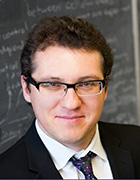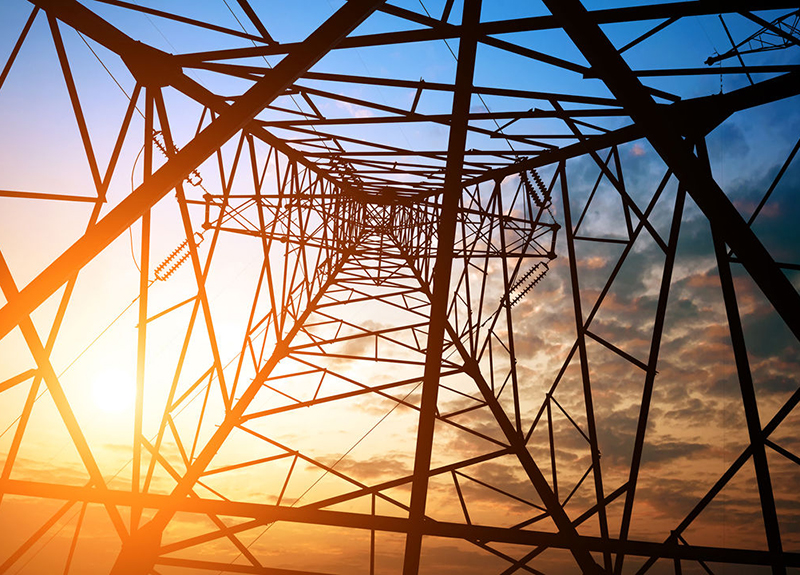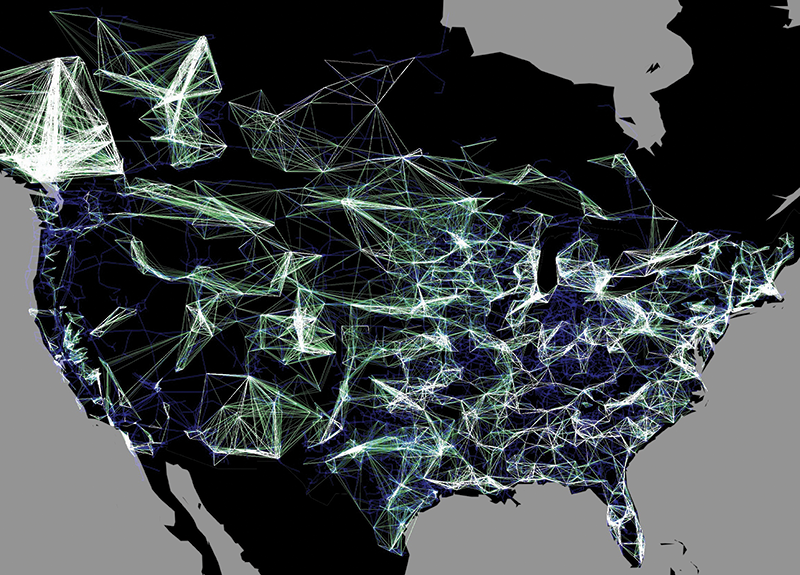Two Northwestern scientists, Adilson E. Motter, the Charles E. and Emma H. Morrison Professor of Physics and Astronomy, and Takashi Nishikawa, Research Associate Professor in the Department of Physics and Astronomy, have been awarded a $3.2 million Network Optimized Distributed Energy Systems (NODES) grant from the U.S. Department of Energy’s Advanced Research Projects Agency (ARPA-E). The award will be used to develop a new frequency-based load control architecture for power grids that integrates increased portions of electricity generation from renewables.
The North American power grid connects electric power transmission (the bulk transfer of power generated in plants) to electric power distribution (the local wiring that reaches consumers) via 450,000 miles of lines in the transmission network. Enhanced reliability of this vast network means fewer and shorter power interruptions, and scientists are working to better and more fluidly integrate renewable energy into the structure.

The goal of the ARPA-E NODES program is to improve the overall efficiency and reliability of the U.S. electric grid and enable renewables penetration at the 50% level or greater.
One commonly proposed solution to these problems is energy storage—developing the infrastructure to store excess energy for periods of higher demand or lower supply. Motter and his team propose a different solution – a smart way to control simultaneous production and consumption in real time.
“The challenge is to do that while keeping the system stable” he says.
The proposed multilayer control architecture will simultaneously ensure system stability at the transmission network level, control frequency at the local distribution network level, and maintain the quality-of-service for individual customers at the building level, all under a single framework.
 “We want to approach and try to resolve the problem of instability. At the local level instability could lead to failure, and a cascade of multiple failures could lead to an outage,” says Nishikawa.
“We want to approach and try to resolve the problem of instability. At the local level instability could lead to failure, and a cascade of multiple failures could lead to an outage,” says Nishikawa.
At the building level, the team will work to integrate ultra high-resolution current/voltage meters into their models. These meters, which are called micro-Phasor Measurement Units (μPMUs), produce measurements required for the real-time, dynamic estimation of transmission and distribution networks.
Motter and Nishikawa worked closely with the Institute for Sustainability and Energy at Northwestern (ISEN) to assemble an interdisciplinary team, which includes experts from Argonne National Laboratory who specialize in renewable technologies, as well as industry partners to facilitate testing and possible market integration of the outcomes of the research.
“ISEN served as the Northwestern vehicle through which we were able to coordinate the interdisciplinary involvement of partners on this project,” says Nishikawa.
Collaboration with industrial partners, which include Schneider Electric, OPAL-RT Technologies, and CPS Energy, is an integral part of the project. OPAL- RT will contribute specialized expertise in hardware-testing and large-scale simulation tools. CPS Energy, based in San Antonio, Texas, will provide access to distribution network data, which will help improve model accuracy. Schneider Electric will contribute a commercialization review and lead the effort to bring the developed technology to market.
The research will consist of technical goals that include: developing efficient numerical methods to compute the load assignment for transmission network buses; designing a new control method for the distribution network; and establishing effective protocols for flexible appliances to control the time course of the aggregated load of a building.
This project comes on the heels of the Northwestern team’s past work in this area. In 2013, Motter and Nishikawa received ISEN seed funding in network optimization and control that allowed them to develop a modeling framework to simulate and potentially reduce the frequency of cascading failures. In 2010, Motter was presented with the Northwestern-Argonne Early Career Investigator Award, which paired his expertise with that of collaborator Jianhui Wang in the ANL Division of Decision and Information Sciences to optimize and control power-grid dynamics and address challenges involved in the development of smart grids. Dr. Wang is now a collaborator in the ARPA-E project.
For a summary of projects accepted in this round of ARPA-E NODES submissions, please click here.






